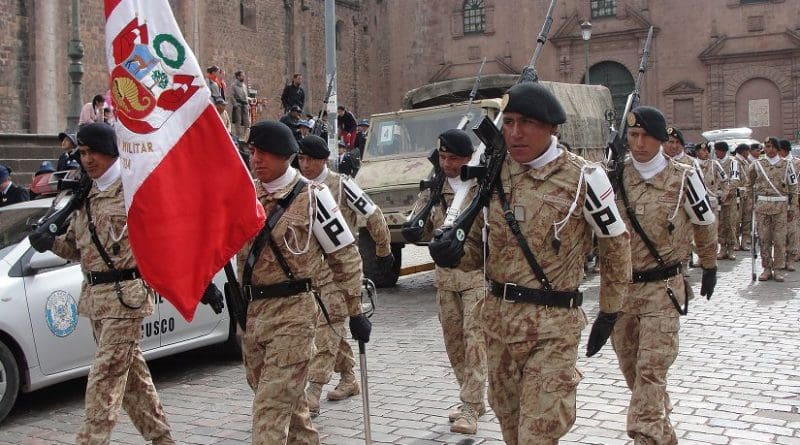Peru: Government Doesn’t Recognize Social Conflicts
The number of social conflicts in Peru dropped in the first half of 2017, going from 212 in December 2016 to 177 in June of this year, according to the 20th report from the Mining Conflicts Observatory, released on July 19, which collects figures from the Ombudsman Office.
According to José de Echave, head of the Mining Conflicts Observatory —made up by the non-governmental organizations Solidarity Action for Development (CooperAcción), the Ecumenical Foundation for Development and Peace (FEDEPAZ) and the Training and Intervention Group for Sustainable Development (Grufides)— there is a declining tendency towards social conflicts, particularly since last March, due to the Coastal El Niño, the climatic phenomenon characterized for the abnormal warming of the waters of the Pacific ocean, which devastated the Peruvian coast earlier this year.
However, said De Echave, “there have been changes made in the methodology being used by the Ombudsman Office to keep records of the social conflicts,” but what is certain is that the reduction in social conflicts is not the result of a government strategy. Last month´s creation of the Vice-Ministry of Territorial Governance, the entity in charge of handling social conflicts, has had nothing to do with this decline, said De Echave.
The head of the Vice-Ministry, Attorney Javier Fernández-Concha, explained during a foreign press conference held on June 7, that “its function and objectives are not only to handle social conflicts once they reach a violence stage. We have a vision of territorial development, of what the causes of conflict are and how to reduce them before reaching a situation of violence; a sign that society is not understanding itself.”
The report from the Observatory, however, considers that Fernández-Concha “has pretended to distance himself from the approach of the Ombudsman Office and the reports on social conflicts that seem to be the cause of discomfort for some people. Almost by magic, he has pointed out — without explaining how — that there are only five social conflicts taking place in the country and not the 217 as reported by the Ombudsman Office. As far as he is concerned, a conflict only exists ‘when there is a crisis, a road blockade, a kidnapping, and the legal order is broken´. He adds that “to handle both dialogue and conflict at the same time is very difficult in a negotiation and to accomplish it is ‘simply to capitulate´.”
This approach is a serious step backwards, the report states, and the reality is that crisis or social unrest categories are getting confused with conflict.
“We cannot lose sight that beyond the existence of protest events, there is an undercurrent of conflict, which is the one that must be understood and obviously addressed, in order to face the root of the problem that manifests before, during and after the protests,” the document reads.
Environmental defenders at risk
Also worrisome is the criminalization of social protest. In the presentation of the report, Mirtha Vásquez, of Grufides, drew attention about the risks environmental defenders are facing.
“There is violence against them and a latent risk of attacks and murders. Attacks for defending their territories — against mining, oil, hydroelectric companies —, psychosocial violence that is used in the media and social networks, characterized by stigmatizing, defamation, categorizing them as enemies of development. This puts the defenders at risk, and the state is not responding because these attacks are considered ‘freedom of expression´. The lack of response encourages impunity; the law is being used to dismantle the social movement,” she said.
David Velasco, of FEDEPAZ, denounced that Law Decree 1095, in place since 2010, allows for the intervention of the Armed Forces in a protest when considering the participants a “hostile group,” and for the use of fire arms.
To file criminal charges against social and environmental leaders that are open for years is another strategy to criminalize protests. In general, the report states, “environmental leaders continue to be strongly attacked and are permanently being discredited … So far there is no efficient state mechanism that can respond to the real risks these people is facing.”
Another issue addressed by the report is the reduction of Environmental Quality Standards, supposedly to favor investment from extractive industries, and the setback in the process of the spatial planning due to changes in the regulations of organization and functions of the Ministry of the Environment (MINAM), taking away from it the administration of the country´s spatial planning, and relegating it to only environmental spatial planning.
Ana Leyva, Director of CooperAcción, told Latinamerica Press that spatial planning “is outside everyone´s mandate, it is now up in the air. It is a weakening of the environmental authority.”
For De Echave, the government seems to not understand that “the objective bases that give an explanation to the conflicts are multidimensional: social, environmental, economic, cultural, and occupational. There are conflicts in a dormant situation that could escalate at any time. For example, occupational conflicts have cropped up in the mining sector, just as an example. As the Peruvian economy is in a recession, conflicts stemming from demands will appear.”

